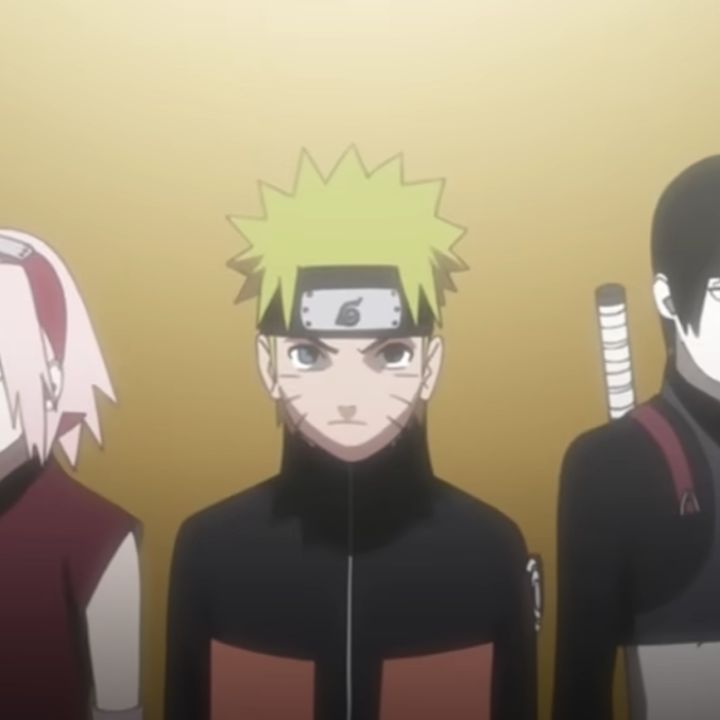Naruto and Boruto would possibly exist in the identical universe, however their coming-of-age tales hit very totally different notes. Whereas Naruto focuses on rising from loneliness and proving your price, Boruto explores what it’s wish to develop up within the shadow of greatness. Each collection dive into private improvement, friendship, loss, and identification—however via wildly totally different lenses. Whether or not you’re Group Naruto or Group Boruto, there’s no denying that each collection goal to painting emotional maturity in a ninja world filled with chaos and expectations. However which is healthier?
1. The Underdog Arc: Naruto’s Loneliness vs. Boruto’s Privilege
Naruto begins his journey as a whole outsider—an orphan, shunned by the village and haunted by a demon fox sealed inside him. He fights not just for power however for acknowledgment and a spot to belong. That outsider perspective is one thing many followers join with, making his progress really feel uncooked and earned. Boruto, alternatively, is the Hokage’s son, rising up with privilege, buddies, and standing. Whereas his struggles with identification are actual, Naruto’s rags-to-respect story packs a extra emotionally grounded coming-of-age story.
2. Friendships That Form Them
Naruto’s friendships with Sasuke, Sakura, and Kakashi type the emotional core of his progress. These bonds are examined via betrayal, struggle, and loss—every second forcing Naruto to mature in heartbreaking methods. Boruto’s crew—Sarada, Mitsuki, and Konohamaru—has potential, however the emotional depth typically falls quick in comparison with the unique Group 7. Naruto’s willingness to chase Sasuke for years provides a dramatic depth that Boruto’s interpersonal dynamics hardly ever match. The load and influence of Naruto’s friendships make his relationships extra integral to his coming-of-age story.
3. The Position of Mentors
Kakashi and Jiraiya are two of essentially the most influential characters in Naruto’s life. They problem him, shield him, and finally form who he turns into—particularly when Naruto experiences profound loss. Boruto has mentors like Sasuke and Konohamaru, however they typically really feel like distant figures or aspect characters. Whereas Sasuke performs a cool anti-hero position, he doesn’t match the emotional weight of Jiraiya’s presence or Kakashi’s regular help. A compelling coming-of-age story typically hinges on mentors, and Naruto’s mentors are robust to beat.
4. How They Deal with Failure
Naruto fails—so much. He’s defeated, dismissed, and knocked down repeatedly, which makes his victories extra satisfying. His perseverance turns into his most defining trait and one of many strongest classes for followers watching him develop. Boruto experiences challenges, however they’re typically softened by his expertise or help system. Failure is crucial to any coming-of-age story, and Naruto’s resilience below strain offers his arc extra grit and emotional reward.
5. The Villains That Form Their Development
Naruto’s enemies—like Ache, Orochimaru, and Madara—problem him on each philosophical and emotional ranges. A lot of his opponents mirror his internal battles, forcing him to develop not simply as a fighter, however as an individual. Boruto’s foes are highly effective, however typically lack that deeper ideological battle that made Naruto’s battles so memorable. Kawaki provides depth, however many arcs really feel pushed by spectacle somewhat than soul. For a standout coming-of-age story, the villains have to push the hero inward—and Naruto’s do exactly that.
6. Themes of Id and Legacy
Naruto’s identification is constructed from the bottom up. He goes from “no person” to legend, and each step of that path is messy, loud, and emotional. Boruto, in the meantime, is consistently making an attempt to outline himself outdoors of his father’s legacy. That generational distinction is highly effective, and Boruto’s want to be seen as greater than “the Hokage’s son” is deeply relatable for at the moment’s youth. Whereas Naruto’s story is traditional and heartfelt, Boruto’s tackle legacy provides a recent spin on the coming-of-age story, particularly in a world that values independence.
7. The World Round Them
Naruto’s world is chaotic, unstable, and filled with actual penalties. His progress occurs in a backdrop of struggle, grief, and survival. Boruto’s world, whereas nonetheless harmful, is extra peaceable and tech-driven, which modifications the emotional stakes. Trendy-day Konoha introduces themes like know-how vs. custom, but it surely lacks the identical urgency Naruto confronted. A darker world doesn’t all the time make for a greater coming-of-age story, however on this case, Naruto’s setting added depth to each stage of his journey.
The Emotional Knockout: Which Story Hits More durable?
When it comes all the way down to emotional depth, earned progress, and narrative influence, Naruto delivers the extra traditional and resonant coming-of-age story. Watching him rise from zero to hero over tons of of episodes is a masterclass in persistence, ache, and private triumph. Boruto does discover distinctive generational themes and provides trendy complexity to identification, but it surely typically seems like a lighter echo of the unique. That mentioned, Boruto’s story remains to be evolving, and with arcs like Kawaki’s and the time-skip saga, it’s gaining emotional weight quick. For now, although, the center of Naruto’s journey nonetheless claims the highest spot.
Do you suppose Boruto will ultimately surpass Naruto’s emotional progress arc? Or is Naruto’s coming-of-age story unbeatable? Pontificate within the feedback—let’s debate!
Learn Extra
Prime 4 Anime You Have to Watch This Spring 2025 Season

Amanda Blankenship is the Director of Social Media for District Media. Along with her duties dealing with all the pieces social media, she incessantly writes for a handful of blogs and likes to share her personal private finance story with others. When she isn’t typing away at her desk, she enjoys spending time along with her daughter, husband, and canine. Throughout her free time, you’re more likely to discover her along with her nostril in a e book, mountain climbing, or enjoying RPG video video games.


